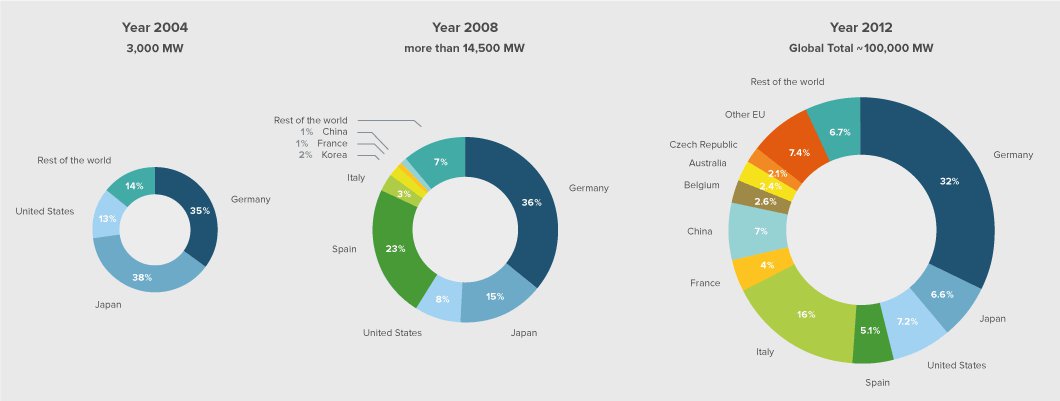Nearly Zero Energy Buildings (n/ZEB) or Plus Energy Buildings (PEB) can only be realised by integrating building with renewable energy systems. Solar photovoltaic panels are capable of tapping the enormous potential of freely available solar radiation in the form of light and convert it to usable electrical energy. Although no concrete data is available, it is estimated that Building Integrated Photovoltaic systems constitute about 1% of the total installation capacity of 100,000 MW at the end of 2012 (Sawin, 2013). The cumulative installed Photovoltaic (PV) power has increased from 103 MW to 63,611 MW in the past two decades worldwide (IEA, 2010) and stands at 136,697 MW as of 2013 (EPIA, 2013). The installed cost of BIPV has a wide range depending on the capacity, make and the country from as low as €2,000/kW in China to up to €4,200/kW in parts of Europe. Levelized Cost Of Electricity (LCOE) from BPIV ranges from €cent12.4 in India and China to up to €cent19.6 in parts of Europe.
The market end-use of PV can be classified as either Building integrated Photovoltaic (BIPV) systems or commercial utility scale systems which could either be BIPV or on ground systems. Besides the above applications PV systems also cater for Off-grid applications of various sizes. Figure below shows the solar PV installed capacities (all PV applications including building mountable and commercial applications) in leading countries over a decade.

PV system is economical where energy prices are high (calculated in terms of Levelized Cost Of Electricity (LCOE) of utility against electricity from PV) or where there is no reliable supply of electricity. Policies like financial incentives for buildings with solar PV installation e.g. by California Energy Commission (Gosolarcalifornia.org, 2015), definitive feed in tariffs etc. (already available in 71 countries worldwide as of early 2013 (Sawin, 2013), act as agents of transformation and encourages building integrated PV installation for power generation. More information on financial incentives and implications can be found under section “IMPACTS”.